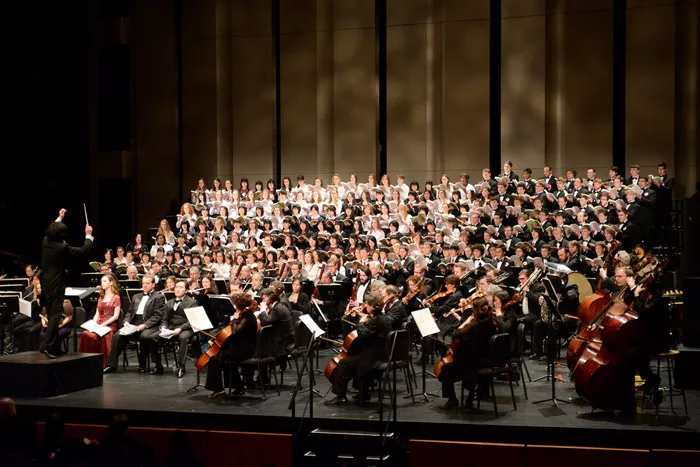Classical music, with its vast history and diverse styles, has captivated audiences for centuries. Spanning from the early medieval period to contemporary works, it encompasses a wide range of genres, forms, and instruments. Despite this diversity, one fundamental musical element serves as the cornerstone of all classical compositions: melody. This article delves into the essence of melody, exploring its pivotal role in classical music and why it remains the primary element that defines the genre.
I. Understanding Melody
What is Melody?
Melody is a sequence of notes that are perceived as a single, coherent entity. It is the part of the music that is most easily remembered and recognized. Melodies are composed of pitches and rhythms, creating a tune that can evoke emotions and convey a story without words. In classical music, melodies are meticulously crafted, often serving as the thematic material that composers develop throughout their works.
II. The Role of Melody in Classical Music
Melody as the Narrative Voice
In classical music, melody often functions as the narrative voice. It guides the listener through the composition, providing a sense of direction and coherence. The melody can introduce a theme, develop it, and bring it to a resolution. This narrative quality allows melodies to communicate complex emotions and ideas, making them central to the listener’s experience.
III. Historical Perspectives on Melody
The Evolution of Melody Through the Ages
a. Medieval Period
During the medieval period, melody was primarily monophonic, consisting of a single line of music without harmonic accompaniment. Gregorian chant, the dominant form of sacred music, exemplifies this style. These chants were simple yet profound, with melodies designed to enhance the liturgical text.
b. Renaissance Period
The Renaissance period saw the emergence of polyphony, where multiple melodic lines were woven together. Composers like Palestrina and Josquin des Prez mastered this technique, creating intricate and harmonious textures. Despite the complexity, individual melodies remained distinct and essential to the overall structure.
c. Baroque Period
In the Baroque era, melody took on a more ornate character. Composers such as Bach and Handel used elaborate ornamentation and expressive melodies to convey dramatic intensity. The use of counterpoint, where independent melodic lines interact, became a hallmark of this period.
d. Classical Period
The Classical period, exemplified by composers like Mozart and Haydn, emphasized clarity and balance in melody. Themes were clear, elegant, and often symmetrical. The development of sonata form allowed for extensive melodic development, with themes being introduced, varied, and recapitulated.
e. Romantic Period
Romantic composers such as Beethoven, Schubert, and Tchaikovsky expanded the emotional range of melody. They crafted long, lyrical lines that conveyed deep emotional states. Melodies became more expressive and complex, often pushing the boundaries of traditional harmonic and formal structures.
f. Modern and Contemporary Periods
In the modern and contemporary periods, melody has continued to evolve. Composers like Stravinsky and Schoenberg experimented with atonality and new melodic structures. However, even in the most avant-garde works, melody remains a vital element, whether as a traditional tune or an abstract sequence of pitches.
IV. Analyzing Melodic Structures
Elements of Melody
Melodies are constructed using several key elements:
Pitch: The specific notes used in a melody. Pitches can vary in frequency, creating high and low sounds.
Rhythm: The timing of the notes. Rhythm gives shape to the melody, determining the duration of each pitch.
Contour: The overall shape of the melody. This includes the rise and fall of pitches, creating a sense of movement.
Interval: The distance between two pitches. Intervals can be small (steps) or large (leaps), influencing the character of the melody.
Phrase: A segment of the melody that functions as a complete musical thought. Phrases are often compared to sentences in language.
V. Thematic Development
In classical music, composers often use motifs and themes to construct their melodies. A motif is a short, recurring musical idea, while a theme is a longer, more complete melodic phrase. These elements can be developed through techniques such as variation, inversion, and augmentation, allowing composers to create complex and cohesive works.
VI. The Impact of Melody on Emotion
Melody has a profound impact on the emotional content of music. Different melodies can evoke a wide range of emotions, from joy to sorrow, excitement to tranquility. The way a melody is constructed—its intervals, rhythms, and contours—plays a significant role in shaping the listener’s emotional response.
VII. The Universality of Melody
Melody is a universal element in music, transcending cultural and geographical boundaries. While the specific characteristics of melodies can vary widely between different musical traditions, the fundamental concept of a coherent sequence of notes is common to all. This universality highlights the deep connection between melody and human experience.
VIII. The Future of Melody in Classical Music
In contemporary classical music, melody continues to play a vital role. Composers are exploring new ways to use melody, incorporating elements from diverse musical traditions and experimenting with innovative structures. Despite these innovations, the essence of melody—its ability to convey emotion and narrative—remains unchanged.
See Also: 6 Classical Music Pieces Inspired by Swans: All You Want to Know
IX. Conclusion
Melody is the primary musical element that defines classical music. Its ability to convey emotion, tell stories, and create memorable themes makes it central to the genre. Throughout history, composers have used melody to create works of profound beauty and complexity, ensuring its enduring power in the world of classical music. As we look to the future, melody will undoubtedly continue to be the heart of classical music, inspiring both composers and listeners alike.

